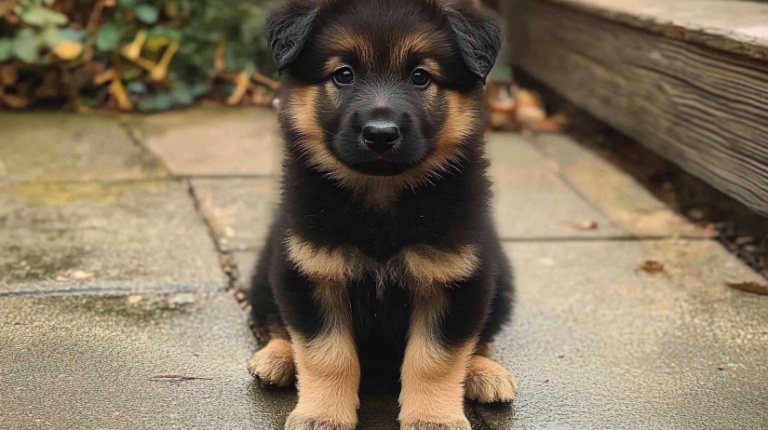Blue Doberman Puppies: 9 Positive & Powerful Insights
Introduction
You open your door after a long day, and there’s a lithe, steel-hued puppy, tail wagging and eyes brimming with excitement. That’s the lively welcome many owners receive from blue doberman puppies, a color variation of the famous Doberman Pinscher known for their distinctive bluish-gray coats. While some might imagine Dobermans exclusively as black-and-tan watch dogs, these cobalt-tinged canines remind the world that Dobermans also come in lesser-known yet equally mesmerizing hues.
But choosing blue doberman puppies isn’t just about aesthetics. As with any breed, you should consider factors like training, exercise, grooming, and potential health issues—particularly for a color variant that can come with unique challenges. This article will walk you through everything you need to know: from blue doberman puppies’ background and genetic inheritance to daily routines, training tips, potential medical concerns, and more. Let’s unravel the mystique of these steel-blue pups together and see whether they could be your ideal four-legged partner.
The Origins and History of Blue Doberman Puppies
Doberman Pinscher Beginnings
All Doberman Pinschers trace back to the late 19th century when Karl Friedrich Louis Dobermann—an innovative tax collector and dogcatcher in Germany—needed a protective yet loyal companion to accompany him on his rounds. By crossbreeding various breeds believed to include the old German Shepherd, Rottweiler, and Black and Tan Terrier, he developed an agile working dog with strong protective instincts. The American Kennel Club (AKC) recognized the Doberman Pinscher in 1908, and it soon gained global acclaim for roles in police work, military tasks, service dog duties, and more.
Coat Color Variants
Standard Doberman colors are black and rust (or black and tan), red and rust, blue and rust, and fawn and rust, as recognized by several kennel clubs. The “blue” color arises from a dilution gene that affects the black coat, producing a washed-out or silvery hue. Consequently, blue doberman puppies can appear as a sleek steel-gray, sometimes with rust markings above the eyes, on the muzzle, chest, and lower legs. Although less common than black or red, the blue variant has carved out a niche among aficionados drawn to its unique look.
Controversies Around Blue Coats
Some breeders and owners have expressed concerns about color-dilution alopecia, a condition in which diluted colors (blue or fawn) may be predisposed to skin problems and coat thinning. While not all blue Dobermans suffer these issues, the potential risk underscores the importance of ethical breeding and rigorous health checks. blue doberman puppies remain recognized by certain Doberman clubs, though some show-ring circles penalize or discourage dilute coats. In everyday life, these steels-tinged pups are loved for their spirited dispositions and distinctive presence.
Physical Characteristics
Size and Build
blue doberman puppies mature into sleek, powerful canines. Males typically stand between 26–28 inches at the shoulder, weighing 75–100 pounds, whereas females measure around 24–26 inches tall and weigh 60–90 pounds. Though slender, they maintain pronounced muscles and a poised stance, reflecting their original role as guardians and protectors. Because they’re big dogs with deep chests and robust limbs, they benefit from age-appropriate exercise to build muscle without overstraining growth plates.
Coat and Color Variation
The hallmark of blue doberman puppies is their steel or charcoal coat coloration—a genetic dilution of the black base color. This shade can present differently across pups:
- Light “silver”: almost gunmetal gray, particularly on the back and flanks.
- Medium “blue”: a balanced, smoky gray with slight luster.
- Dark “blue-ish black”: a deeper hue with subtle hints of bluish reflection.
They typically retain rust or tan points on their muzzle, chest, eyebrows, and legs, forming the classic Doberman pattern. Grooming is straightforward as their coats are short, though occasional baths and regular brushing help manage shedding.
Facial and Ear Structure
Dobermans in many countries have historically had their ears cropped to a pointed shape and tails docked, yet this practice is losing popularity in parts of the USA (and is restricted or banned in some other countries). Whether with cropped or natural ears, blue doberman puppies typically exhibit:
- Alert, triangular ears: if cropped, they stand erect; if natural, they fold or partially stand.
- Strong muzzle: tapering gently, showcasing big, soulful eyes.
- Well-defined chest: deep but not overly broad, enabling fluid movement.
Because color alone doesn’t alter structural form, you can expect the same proud posture as any well-bred Doberman, just tinted in a shimmering grayish coat.
Table: Growth Stages of Blue Doberman Puppies (Approximate)
| Age | Weight Range (Males) | Weight Range (Females) | Developmental Milestones |
|---|---|---|---|
| 8–10 Weeks | 10–20 lbs | 8–15 lbs | New home transition, basic house-training, beginning socialization |
| 3–4 Months | 25–45 lbs | 20–35 lbs | Teething, short training sessions, crate acclimation |
| 6–7 Months | 50–70 lbs | 40–60 lbs | Adolescent phase, more intense exercise, deeper bonding |
| 1 Year | 70–90 lbs | 50–75 lbs | Approaching adult size, advanced training, final ear set |
| 2 Years+ | 75–100 lbs (males) | 60–90 lbs (females) | Full maturity, established temperament, coat color stabilized |
Temperament & Personality
Protective Yet Affectionate
While certain stereotypes label Dobermans as fierce guard dogs, blue doberman puppies typically display a balanced mix of loyalty, protective drive, and warm affection. They often form strong attachments to their owners, shadowing them from room to room. This loyalty translates into a watchful stance: when strangers approach, they’ll likely bark an alert, but with proper socialization, they remain composed rather than aggressive.
Intelligent, Eager to Learn
Few breeds match Dobermans in intelligence and trainability, and blue doberman puppies are no exception. They thrive on mental challenges like advanced obedience tasks, puzzle toys, and interactive games. Left unstimulated, they may invent their own fun (think chewing, barking, or minor escapes). Mind games, short but regular training sessions, and learning new commands keep them mentally bright and out of trouble.
Confidence with the Right Guidance
Dobermans typically exhibit self-assured demeanors, but early experiences shape whether that confidence becomes stable or anxious. Positive socialization—exposure to varied people, sounds, animals—teaches blue doberman puppies to remain calm under new conditions. Conversely, limited socialization can yield timid or reactive adult dogs. Providing firm, loving leadership fosters a well-adjusted pup who meets life’s curveballs with poise.
Playful Family Dogs
Despite their fearsome rep in pop culture, many Dobermans—blue coats included—settle beautifully into family life, happily romping with children (provided the kids respect them) and other dogs. They can be silly and sweet at home yet maintain a sense of duty to protect. Above all, Dobermans crave closeness. They aren’t yard ornaments content to be left alone for hours; they want to be part of your daily routine and experiences.
Bringing Home Blue Doberman Puppies
Ethical Breeders vs. Adoption
blue doberman puppies can be trickier to locate than standard black or red, so it’s vital you don’t compromise on breeder quality:
- Health Testing: Reputable breeders screen for hip dysplasia, dilated cardiomyopathy, hypothyroidism, Von Willebrand’s disease, and potential coat/skin issues.
- Transparency: They’ll discuss lineages, any color dilution alopecia concerns, and offer references from past puppy owners.
- Socialization: Pups raised in a home environment get used to household sounds, improving adaptation.
Alternatively, adopting is an option—while less common, some breed-specific rescues or general shelters may have a “blue” Doberman in need of a second chance. Always evaluate the dog’s temperament and medical background if known.
Puppy-Proofing Your Home
Before your blue doberman puppies arrive:
- Secure Loose Items: Move breakables, cables, or toxic plants out of reach.
- Set Up a Crate or Play Area: Provide a comfy crate, bedding, and chew toys for safe downtime.
- Block Off Dangerous Spots: Use baby gates to limit unsupervised exploration.
- Stock Up on Supplies: Puppy food, bowls, collar, ID tag, leash, cleaning supplies for inevitable potty accidents.
Be prepared for an energetic pup that might test boundaries. Structured environments reduce mistakes and set them on a positive track.
Day-to-Day Care for Blue Doberman Puppies
Nutrition and Feeding
Dobermans are medium-large dogs with high energy needs, especially in puppyhood. For blue doberman puppies:
- Puppy-Specific Formula: Balanced proteins, moderate fats, and controlled calcium levels to prevent rapid bone growth.
- Portion Control: Overfeeding can worsen joint stress or lead to obesity—stick to recommended amounts for your pup’s weight and age.
- Gradual Food Transition: If switching brands, do so over several days to avoid GI upset.
Consult your veterinarian about portion sizes and feeding schedules, often 3 meals daily until about 6 months, then transitioning to 2 meals per day.
Exercise and Activity
A well-exercised Doberman is a happy, well-behaved dog, but puppy joints must be safeguarded:
- Short Walks: For younger pups, multiple short strolls rather than one long trek.
- Structured Play: Fetch (on soft ground), gentle tug-of-war, puzzle toys.
- Progressive Intensity: Increase distance and challenge as they mature, watching for fatigue or limping.
At around 1–2 years, blue doberman puppies can handle more vigorous exercise—like jogging, agility, or advanced obedience training. This consistent activity fosters a strong bond and channels their energy constructively.
Grooming Needs
Though short-coated, Dobermans have a sleek fur that still sheds moderately:
- Brushing: Weekly with a soft bristle brush or grooming mitt to remove loose hairs.
- Bathing: Every 1–2 months or as needed. Over-bathing can dry their skin.
- Nail Trims: Every few weeks, as overgrown nails can cause discomfort.
- Ear Checks: Clean gently if you see wax or debris—particularly important if ears are cropped, as infection can hide in the ear canal folds.
Color-diluted Dobermans (like blues) may face a higher risk of color dilution alopecia, leading to thinning hair or patchy coats. Not every dog is affected, but if signs of coat dryness or irritation arise, consult your vet about specialized shampoos or diet adjustments.
Training and Socialization
blue doberman puppies are intelligent but can be willful if they sense inconsistency. Start training early:
- Positive Reinforcement: Praise, treats, or a favorite toy for correct actions.
- Short Sessions: A puppy’s attention can wane quickly, so frequent, brief training is more effective than one long session.
- Puppy Classes: They help with basic commands and expose your pup to new dogs and humans in a structured setting.
- House Rules: Decide if furniture is off-limits, or if certain areas are restricted, and enforce consistently from day one.
Because of their protective instincts, letting them meet a variety of strangers and dogs fosters confidence. The more experiences they gather under calm guidance, the more well-rounded they become as adults.
Health and Vet Care
While typically robust, blue doberman puppies can still inherit or develop certain conditions:
- Dilated Cardiomyopathy (DCM): A serious heart disease that can appear in some lines.
- Hip/Elbow Dysplasia: Malformations that can cause lameness or arthritis.
- Hypothyroidism: A hormone imbalance resulting in coat changes or weight issues.
- Color Dilution Alopecia: Potential hair thinning, dryness, or patchiness in the coat.
Annual vet checkups and routine blood tests can catch early signs. Because dobermans are large-chested, keep an eye out for bloat or gastric torsion—avoid heavy exercise right after large meals. Spaying or neutering at a recommended age (often between 12–18 months) helps manage behaviors and can reduce certain health risks.
Fitting Blue Doberman Puppies Into Your Lifestyle
Apartment vs. House
Dobermans can adapt to apartment life if you diligently provide daily exercise—long walks, dog park visits, or interactive play. That said, a yard or open space suits them well, especially as they grow into large, energetic dogs. If living in tighter quarters, be sure to prevent pent-up energy from surfacing as destructive chewing or nuisance barking.
Family Compatibility
blue doberman puppies can flourish in families with children, provided you supervise interactions and teach kids to respect the dog’s boundaries. They often adore being part of family activities, but constant “roughhouse” by kids might overwhelm them. Clear rules, consistent leadership, and structured routines help them settle seamlessly into family life.
Multi-Pet Households
Dobermans typically get along with other dogs if introduced early and socialized properly. Because of strong prey drive, smaller animals like cats or rabbits may need cautious introductions. Many do co-exist peacefully once the Doberman is taught that household pets are part of the “pack,” but supervised introductions are crucial.
Outdoor Adventures
The adventurous spirit of blue doberman puppies suits owners who enjoy active lifestyles—hiking, jogging, or agility training are all within a well-trained Doberman’s wheelhouse. Their short coat means they fare better in mild to warm climates, but not extreme cold. If it’s freezing out, consider a dog jacket or limit time outdoors to prevent discomfort.
Real-Life Examples: Blue Dobermans in Action
Case Study 1: Luna, the Family Guardian
Luna’s owners fell for her shimmering silver coat as a young blue doberman puppy. Although they lived in a suburban home without a massive yard, they dedicated time each morning and evening for brisk walks and occasional weekend hikes. With early crate training, puppy socialization classes, and patient house rules, Luna matured into a gentle, watchful companion who never misses a beat—especially around the kids she adores.
Case Study 2: Zeus, the Obedience Champion
When Zeus was just a spindly blue doberman puppy, his owner recognized a driven, curious nature. They enrolled him in puppy agility and advanced obedience courses, channeling that energy into tasks like retrieving dumbbells, executing tricky commands, and nailing pivot turns. Within two years, Zeus achieved impressive placements in local obedience trials, wowing spectators with his glinting steel coat and unwavering focus.
FAQs
Are health concerns more common in blue Dobermans?
They face typical Doberman conditions plus possible coat troubles. blue doberman puppies might develop color dilution alopecia, causing fur thinning. Routine screenings and reputable breeders minimize serious problems.
Do all blue Dobermans get alopecia?
Some do, many don’t. blue doberman puppies from careful lines might avoid severe coat issues. Vigilant monitoring and specialized shampoos, if needed, help maintain coat quality.
Can a blue Doberman compete in breed shows?
They often can, within recognized color categories. blue doberman puppies are a legitimate Doberman color. However, some show communities may prefer darker hues, so acceptance varies by region.
Is a special meal plan needed for a blue Doberman?
In general, no. blue doberman puppies thrive on the same large-breed puppy formulas recommended for all Dobermans. Prioritizing nutritious ingredients and correct serving sizes fosters optimal growth.
Does a blue coat affect Doberman temperament?
Not at all. blue doberman puppies share the typical Doberman personality—alert, loyal, and gentle with proper guidance. Social experiences and consistent leadership influence their behavior more than color.
Are there extra grooming steps for a blue Doberman?
Weekly brushing is key to removing loose hair. blue doberman puppies with potential coat dryness may need specialized or moisturizing products. Monitor skin for dryness or itching, adjusting care as advised by a vet.
Conclusion
blue doberman puppies take the beloved, loyal Doberman personality and wrap it in a striking steel-gray coat—turning heads wherever they go. Underneath that unique color, they’re the same bright, protective dogs that have served as devoted companions, working partners, and family favorites for generations. Caring for your pup means giving them consistent training, providing daily exercise, staying vigilant about potential coat or health challenges, and most importantly, showering them with the love and engagement they crave. If you’ve got a big heart to match their big presence, a lifetime of affection and unwavering loyalty awaits. Already have experiences or questions about blue doberman puppies? Jump into the comments and share your story or ask away!
For more advice on adopting and caring for dogs of all breeds, you can visit the
American Society for the Prevention of Cruelty to Animals (ASPCA). They provide comprehensive guidance on pet health, responsible ownership, and resources for those considering adoption—helpful for anyone welcoming blue doberman puppies or any new canine friend into their life.







